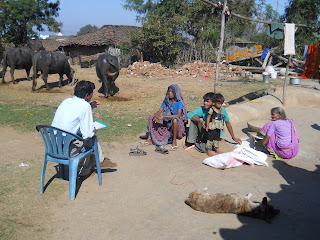| FIGURES AT A GLANCE - INDIA (census 2011) | |||
|---|---|---|---|
| POPULATION | Persons | 1,210,193,422 | |
| Males | 623,724,248 | ||
| Females | 586,469,174 | ||
| DECADAL POPULATION GROWTH 2001 -> 2011 | Persons | 181,455,986 | 17.64% |
| Males | 91,501,158 | 17.19% | |
| Females | 89,954,828 | 18.12% | |
The Census 2011 is the 15th census of India since 1872 and conducted in two phases — houselisting and housing census (April to September 2010) and population enumeration (February 9 to 28, 2011).The Census covered all 35 states and UTs and cost Rs 2,200 crore. 27 lakh enumerators were involved in the exercise where 8,000 metric tonnes of paper and 10,500 metric tonnes of material moved.
For more information log on to:
censusindia.gov
Some positive facts:
- The highest child sex ratio is in Mizoram (971 females against 1000 males) and Meghalaya (970).
- Lahul and Spiti district of Himachal Pradesh has the highest sex ratio (1,013 female).
- For the first time, there is a significant fall in the growth rate of population in the Empowered Action Group states after decades of stagnation,” The EAG states are : UP, Bihar, Rajasthan, Uttarakhand, Jharkhand, Madhya Pradesh Chhattisgarh and Orissa.
- The literacy rate has gone up from 64.83 per cent in 2001 to 74.04 per cent in 2011 showing an increase of 9.21 per cent.
Some –negative facts:
- Haryana’s Jhajjar (774 females) and Mahendragarh (778 females) districts have the lowest sex ratio
- The combined population of UP and Maharashtra is bigger than that of the US.
- The highest population density is in Delhi’s north-east district (37,346 per sq km)
- The lowest is in Dibang Valley in Arunachal Pradesh (just one per sq km).
- Interestingly, the addition of 181 million population during 2001-2011 is slightly lower than the total population of Brazil, the fifth most populous country in the world.
- While China has 19.4 per cent of the world’s total population, India has 17.5 per cent of the world population.
- The Census indicated a continuing preference for male children over female children. The latest child sex ratio in is 914 female against 1,000 male–the lowest since Independence.

Now we have to think a lot about:
- Water problems
- Space problems
- Education
- Food availability
- Employment
- And many other concerns...

































